News archive
Want climate-change adaptation? Evolutionary theory can help (28 November 2020)
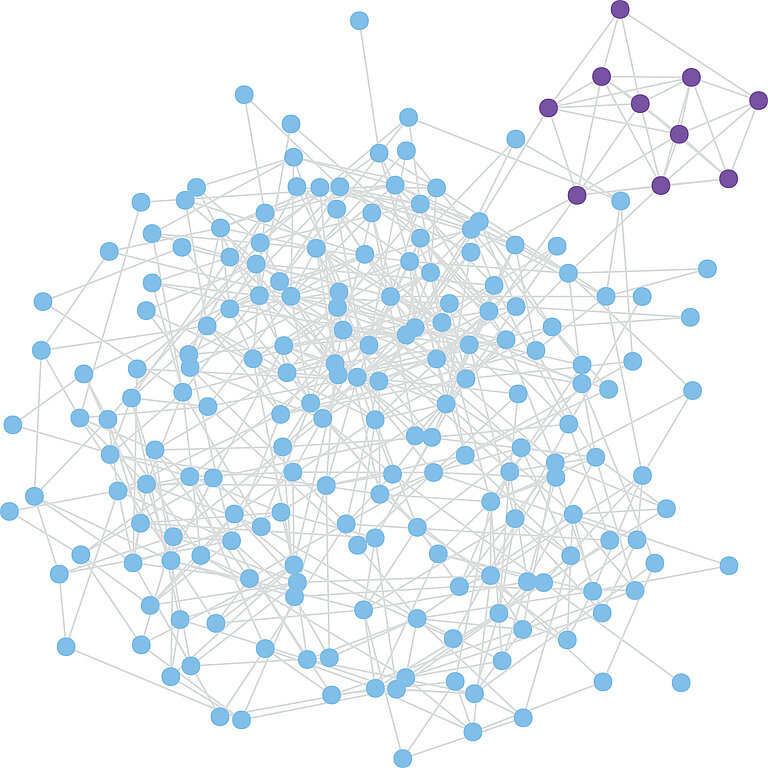
The idea of adaptation, in which an organism or population becomes better suited to its environment, is used in a variety of disciplines. Originating in evolutionary biology, adaptation has been a central theme in biological anthropology and human ecology. More recently, the study of adaptation in the context of climate change has become an important topic of research in the social sciences. While there are clearly commonalities in the different uses of the concept of adaptation in these fields, there are also substantial differences. We describe these differences and suggest that the study of climate-change adaptation could benefit from a re-integration with biological and evolutionary conceptions of human adaptation. This integration would allow us to employ the substantial theoretical tools of evolutionary biology and anthropology to understand what promotes or impedes adaptation. The evolutionary perspective on adaptation focuses on diversity because diversity drives adaptive evolution. Population structures are also critical in facilitating or preventing adaptation to local environmental conditions. This suggests that climate-change adaptation should focus on the sources of innovation and social structures that nurture innovations and allow them to spread. Truly innovative ideas are likely to arise on the periphery of cohesive social groups and spread inward. The evolutionary perspective also suggests that we pay careful attention to correlated traits, which can distort adaptive trajectories, as well as to the importance of risk management in adaptations to variable or uncertain environments. Finally, we suggest that climate-change adaptation could benefit from a broader study of how local groups adapt to their dynamic environments, a process we call “autochthonous adaptation.” Read article here.
“All the problems in the community are multifaceted and related to each other”: Inuit concerns in an era of climate change (7 November 2020)
Objective
Human dimensions of climate change research in the Arctic often proposes ways for local communities to adapt to changes to their environment, foregrounding problems posed by climate change while treating social, political, and economic factors as background conditions. We explore the relevance of this research paradigm for Inuit by examining how Inuit from Kangiqsujuaq present and discuss the major issues facing their community.
Methods
We thematically code and analyze the responses of 107 Inuit to three free-response questions about the problems facing their community and the best things about their community. The data were collected as part of a questionnaire for a project focused on food security and food sharing conducted in Kangiqsujuaq, Nunavik, in 2013 to 2014.
Results
Few respondents mentioned issues relating to climate change among the most pressing problems faced by their community. Rather, a suite of interconnected social and economic issues, particularly substance abuse and the cost of living, emerged as the main concerns of Kangiqsujuarmiut. However, the environment was a central theme in respondents' favorite thing about their community.
Conclusions
In light of the concerns identified by Inuit, we argue that much research on climate change makes incorrect a priori assumptions and consequently fails to capture aspects of Arctic socioecological systems that are essential for how Inuit are responding to climate change. An inductive, open-ended approach can help produce research more relevant to communities. Read article here.
Comparing Social Network Structures Generated through Sociometric and Ethnographic Methods (13 August 2020)
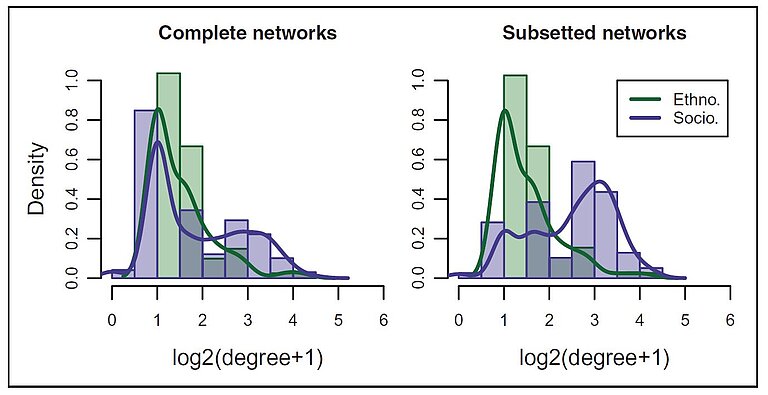
Social connections between individuals are often an important source of information for both quantitative and qualitative anthropological research. Here, we seek to understand the relative strengths and weaknesses of sociometric and ethnographic representations of social connections. We do this by comparing network data collected using a sociometric technique (a name generator) with a network drawn by project ethnographers representing their understanding of social structure in the study population. We find many similarities in the two networks, but they offer somewhat different perspectives into the local social structure. Although the ethnographic network is shaped by the ethnographers’ deeper knowledge of a subset of network members, individuals with high degree (but not betweenness) in the sociometric network are generally present in the ethnographic network. The ethnographers’ interpretation of the factors that lead to high degree centrality in the network is broadly accurate. However, the sociometric network is characterized by a high level of transitivity not seen in the ethnographic network. We consider the importance of the differences we observe for ethnographic practice. Read full article here.
Fatherhood, egalitarianism, and child health in two small-scale societies in the Republic of the Congo (28 July 2020)
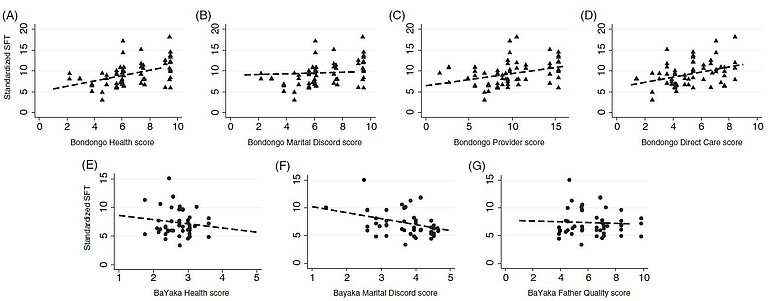
Objectives: The study goals were to (a) characterize the cultural model of fatherhood among the BaYaka, a community of egalitarian foragers in the Republic of the Congo; (b) test if BaYaka fathers' quality in relation to the cultural model predicts their children's energetic status; and (c) compare the variance in BaYaka children's energetic status to that of children of neighboring Bondongo fisher-farmers, among whom there is less cooperative caregiving, less resource sharing, and greater social inequality.
Methods: We used informal interviews to establirmal interviews to establish the cultural model of fatherhood, which we used to build a peer ranking task to quantify father quality. Children's energetic status was assessed by measuring height, weight, and triceps skinfold thickness. We then tested for associations between father quality scores derived from the ranking task and children's energetic status using ordinary least squares regression. Equality of variance tests were used to compare BaYaka and Bondongo children's energetic statuses.
Results: The BaYaka described fathers as responsible for acquiring resources and maintaining marital harmony, welcoming others to the community and sharing well with them, and teaching their children about the forest. Agreement on men's quality in these domains was high, but father quality did not significantly predict children's energetic status. BaYaka children had lower variance in energetic status overall compared to Bondongo children.
Conclusions: We suggest that the core BaYaka values and practices that maintain egalitarian social relations and distribution of resources help buffer children's health and well-being from variation in their fathers' qualities in culturally valued domains. Read fullarticle here.
The life history of human foraging: Cross-cultural and individual variation (25 June 2020)
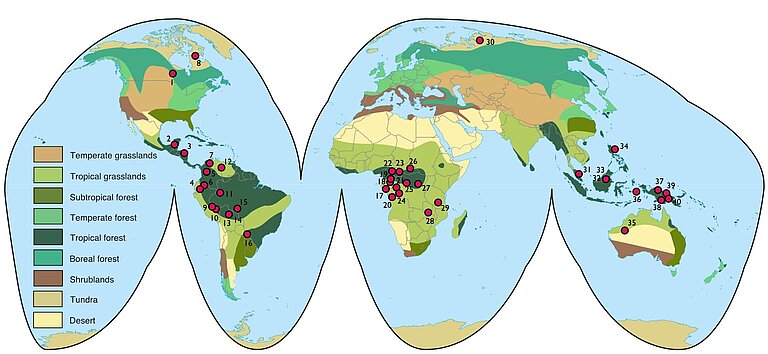
Human adaptation depends on the integration of slow life history, complex production skills, and extensive sociality. Refining and testing models of the evolution of human life history and cultural learning benefit from increasingly accurate measurement of knowledge, skills, and rates of production with age. We pursue this goal by inferring hunters’ increases and declines of skill from approximately 23,000 hunting records generated by more than 1800 indi-viduals at 40 locations. The data reveal an average age of peak productivity between 30 and 35 years of age, although high skill is maintained throughout much of adulthood. In addition, there is substantial variation both among individuals and sites. Within study sites, variation among individuals depends more on heterogeneity in rates of decline than in rates of increase. This analysis sharpens questions about the coevolution of human life history and cultural adaptation. Read full article here.
Competing forces of withdrawal and disease avoidance in the risk networks of people who inject drugs (22 June 2020)
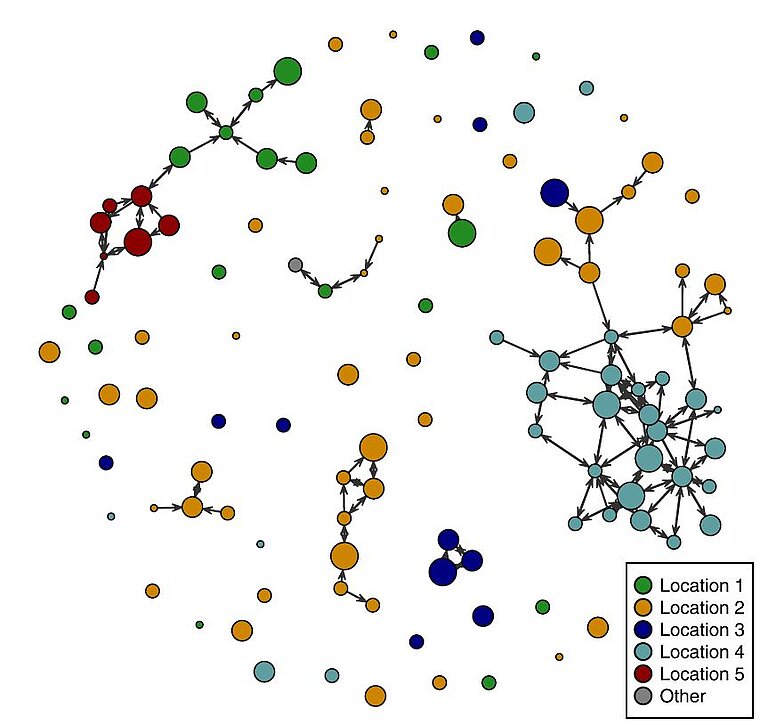
We analyze a network of needle-sharing ties among 117 people who inject drugs (PWID) in rural Puerto Rico, using exponential random graph modeling to examine whether network members engage in partner restriction to lower their risk of contracting HIV or hepatitis C (HCV), or in informed altruism to prevent others from contracting these infections. Although sharing of used syringes is a significant risk factor for transmission of these diseases among PWID, we find limited evidence for partner restriction or informed altruism in the network of reported needle-sharing ties. We find however that sharing of needles is strongly reciprocal, and individuals with higher injection frequency are more likely to have injected with a used needle. Drawing on our ethnographic work, we discuss how the network structures we observe may relate to a decision-making rationale focused on avoiding withdrawal sickness, which leads to risk-taking behaviors in this poor, rural context where economic considerations often lead PWID to cooperate in the acquisition and use of drugs. Read full text here.
Market integration reduces kin density in women’s ego-networks in rural Poland (2 April 2020)
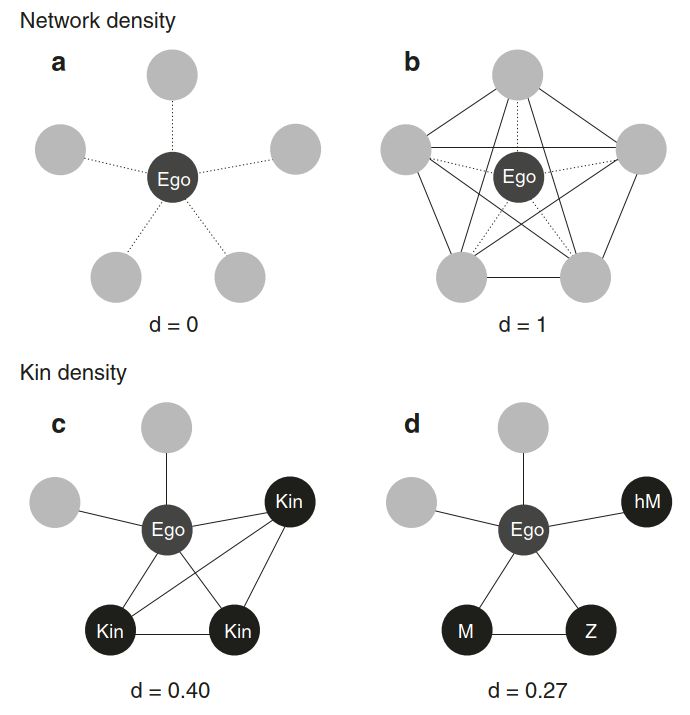
It is widely assumed that as populations become more market integrated the ‘inner circles’ of people’s social networks become less densely connected and family-oriented. This ‘loosening’ of kin networks may fundamentally alter the social dynamics of reproduction, facilitating demographic transitions to low fertility. Few data exist to test this hypothesis. Previous research in urbanized populations has not explicitly measured kin density in ego-networks, nor assessed how market integration influences network structure at different levels of aggregation. Here I analyze the ego-networks of ~2000 women in 22 rural Polish communities transitioning from subsistence farming to market-dependence. I compare how egonetwork size, density and kin density co-vary with household and community-level market integration. Market integration is associated with less kin-dense networks, but not necessarily less dense ones, and is unrelated to network size. Declining kin density during economic transitions may be a critical mechanism for the broader cultural transmission of low fertility values. Read full article here.
Field evidence for two paths to cross-cultural competence: implications for cultural dynamics (10 February 2020)
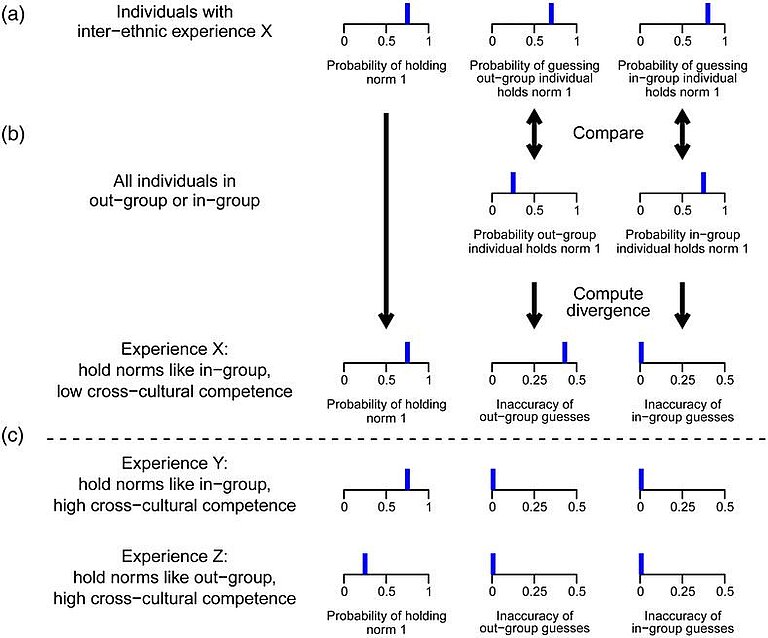
Interaction between members of culturally distinct (ethnic) groups is an important driver of the evolutionary dynamics of human culture, yet relevant mechanisms remain underexplored. For example, cultural loss resulting from integration with culturally distinct immigrants or colonial majority populations remains a topic whose political salience exceeds our understanding of mechanisms that may drive or impede it. For such dynamics, one mediating factor is the ability to interact successfully across cultural boundaries (cross-cultural competence). However, measurement difficulties often hinder its investigation. Here, simple field methods in a uniquely suited Amazonian population and Bayesian item–response theory models are used to derive the first experience-level measure of cross-cultural competence, as well as evidence for two developmental paths: cross-cultural competence may emerge as a side effect of adopting out-group cultural norms, or it may be acquired while maintaining in-group norms. Ethnographic evidence suggests that the path taken is a likely consequence of power differences in inter- vs intra-group interaction. The former path, paralleling language extinction, may lead to cultural loss; the latter to cultural sustainability. Recognition of such path-dependent effects is vital to theory of cultural dynamics in humans and perhaps other species, and to effective policy promoting cultural diversity and constructive inter-ethnic interaction. Read full article here.
Who teaches children to forage? Exploring the primacy of child-to-child teaching among Hadza and BaYaka Hunter-Gatherers of Tanzania and Congo (1 February 2020)
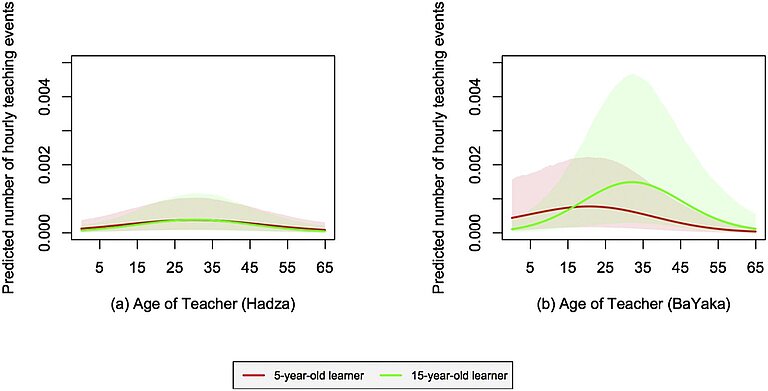
Teaching is cross-culturally widespread but few studies have considered children as teachers as well as learners. This is surprising, since forager children spend much of their time playing and foraging in child-only groups, and thus, have access to many potential child teachers. Using the Social Relations Model, we examined the prevalence
of child-to-child teaching using focal follow data from 35 Hadza and 38 BaYaka 3- to 18-year-olds. We investigated the effect of age, sex and kinship on the teaching of subsistence skills. We found that child-to-child teaching was more frequent than adult-child teaching. Additionally, children taught more with age, teaching was more likely to occur within same-sex versus opposite-sex dyads, and close kin were more likely to teach than non-kin. The Hadza and BaYaka also showed distinct learning patterns; teaching was more likely to occur between sibling dyads among the Hadza than among the BaYaka, and a multistage learning model where younger children learn from peers, and older children from adults, was evident for the BaYaka, but not for the Hadza. We attribute these differences to subsistence and settlement patterns. These findings highlight the role of children in the intergenerational transmission of subsistence skills. Read full text here.
Challenges of Learning to Escape Evolutionary Traps (10 December 2019)
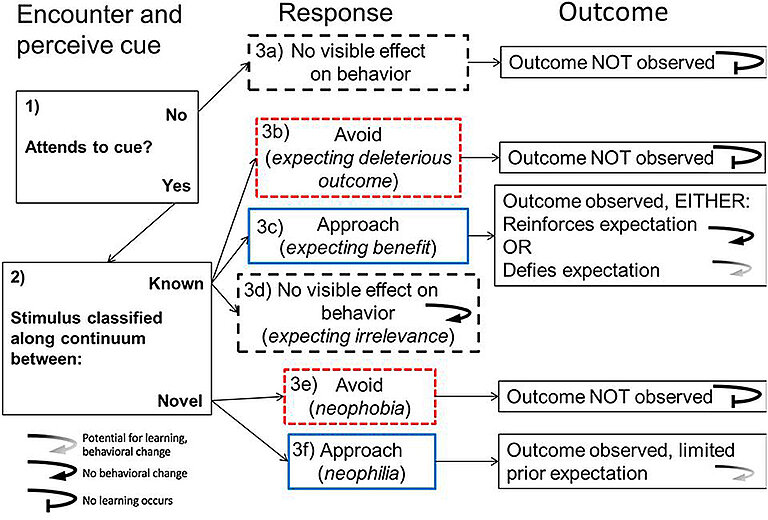
Many animals respond well behaviorally to stimuli associated with human-induced rapid environmental change (HIREC), such as novel predators or food sources. Yet others make errors and succumb to evolutionary traps: approaching or even preferring low quality, dangerous or toxic options, avoiding beneficial stimuli, or wasting resources responding to stimuli with neutral payoffs. A common expectation is that learning should help animals adjust to HIREC; however, learning is not always expected or even favored in many scenarios that expose animals to ecological and evolutionary traps. We propose a conceptual framework that aims to explain variation in when learning can help animals avoid and escape traps caused by HIREC. We first clarify why learning to correct two main types of errors (avoiding beneficial options and approaching detrimental options) might be difficult (limited by constraints). We then identify and discuss several key behavioral mechanisms (adaptive sampling, generalization, habituation, reversal learning) that can be targeted to help animals learn to avoid traps. Finally, we discuss how individual differences in neophobia/neophilia and personality relate to learning in the context of HIREC traps, and offer some general guidance for disarming traps. Given how devastating traps can be for animal populations, any breakthrough in mitigating trap outcomes via learning could make the difference in developing effective solutions. Read full article here.
Cultural linkage: the influence of package transmission on cultural dynamics (5 December 2019)
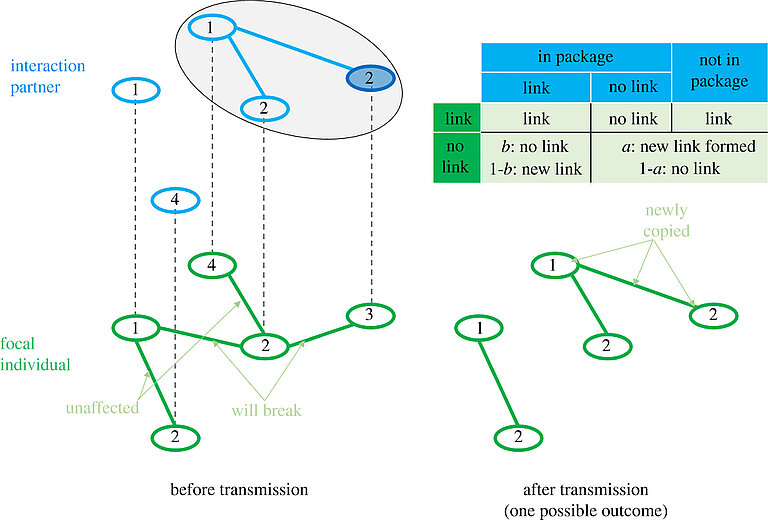
Many cultural traits are not transmitted independently, but together as a package. This can happen because, for example, media may store information together making it more likely to be transmitted together, or through cognitive mechanisms such as causal reasoning. Evolutionary biology suggests that physical linkage of genes (being on the same chromosome) allows neutral and maladaptive genes to spread by hitchhiking on adaptive genes, while the pairwise difference between neutral genes is unaffected. Whether packaging may lead to similar dynamics in cultural evolution is unclear. To understand the effect of cultural packages on cultural evolutionary dynamics, we built an agent-based simulation that allows links to form and break between cultural traits. During transmission, one trait and others that are directly or indirectly connected to it are transmitted together in a package. We compare variation in cultural traits between different rates of link formation and breakage and find that an intermediate frequency of links can lower cultural diversity, which can be misinterpreted as a signature of payoff bias or conformity. Further, cultural hitchhiking can occur when links are common. Read full article here.
Lions, Bylaws, and Conservation Metrics (11 November 2019)
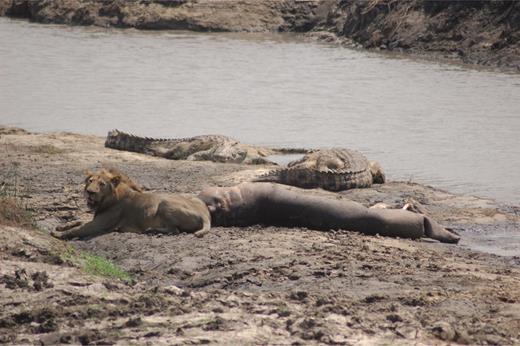
African lions are a significant threat to pastoralists, triggering both retaliatory and nonretaliatory killings that represent a high-profile example of human–wildlife conflict. In the present article, we report on a grassroots campaign to reduce such conflict by shifting agropastoralists’ attitudes toward lion killing and the central role of bylaws in its apparent success. Insofar as all of East Africa’s principal protected areas still harboring lions are surrounded by pastoralist populations, the vast majority of which persecute lions, this novel strategy is of considerable wide-scale and practical significance. We report on an estimated 59%–69% reduction in the number of lions killed since the implementation of bylaws and use our experiences to highlight the need for fresh dialog among project managers, conservation organizations, and their funders in crafting appropriate conservation success metrics. In the context of human–wildlife conflict, changes in peoples’ norms and attitudes are of greater significance over the long term than simplistic tabulations of the number of individuals saved. Read full article here.
Unpacking mating success and testing Bateman’s principles in a human population (15 August 2019)
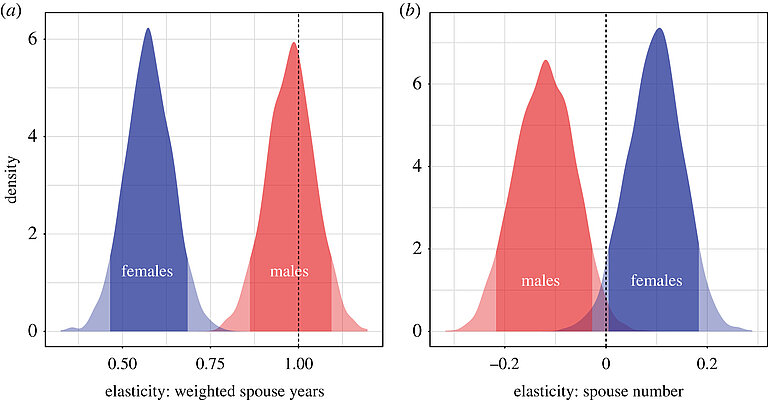
Human marriage systems, characterized by long-term partnerships and extended windows of parental care, differ from the mating systems of pulsed or seasonally breeding non-human animals in which Bateman’s principles were originally tested. These features, paradigmatic of but not unique to humans, complicate the accurate measurement of mating success in evaluating Bateman’s three principles. Here, we unpack the concept of mating success into distinct components: number of partners, number of years partnered, the timing of partnerships, and the quality of partners. Drawing on longitudinal records of marriage and reproduction collected in a natural-fertility East African population over a 20-year period, we test and compare various models of the relationship between mating success and reproductive success (RS), and show that an accurate assessment of male and female reproductive behaviour requires consideration of all major components of mating success. Furthermore, ... Read full article here.
Patterns of paternal investment predict cross-cultural variation in jealous response (23 July 2019)
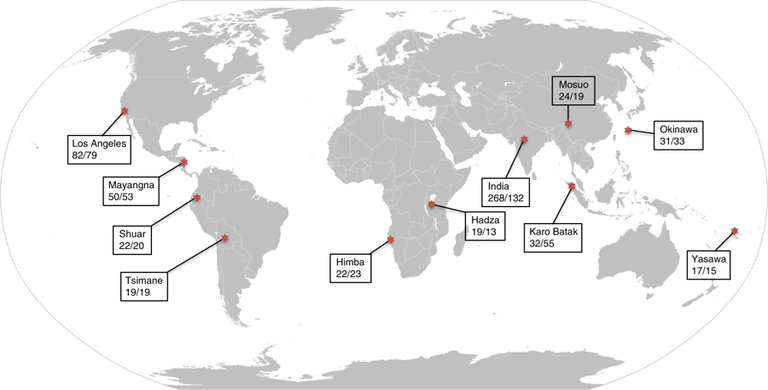
Long-lasting, romantic partnerships are a universal feature of human societies, but almost as ubiquitous is the risk of instability when one partner strays. Jealous response to the threat of infidelity is well studied, but most empirical work on the topic has focused on a proposed sex difference in the type of jealousy (sexual or emotional) that men and women find most upsetting, rather than on how jealous response varies1,2. This stems in part from the predominance of studies using student samples from industrialized populations, which represent a relatively homogenous group in terms of age, life history stage and social norms3,4. To better understand variation in jealous response, we conducted a 2-part study in 11 populations (1,048 individuals). In line with previous work, we find a robust sex difference in the classic forced-choice jealousy task. However, we also show substantial variation in jealous response across populations. Read full article here.
Counter-Culture: Does Social Learning Help or Hinder Adaptive Response to Human-Induced Rapid Environmental Change? (27 June 2019)
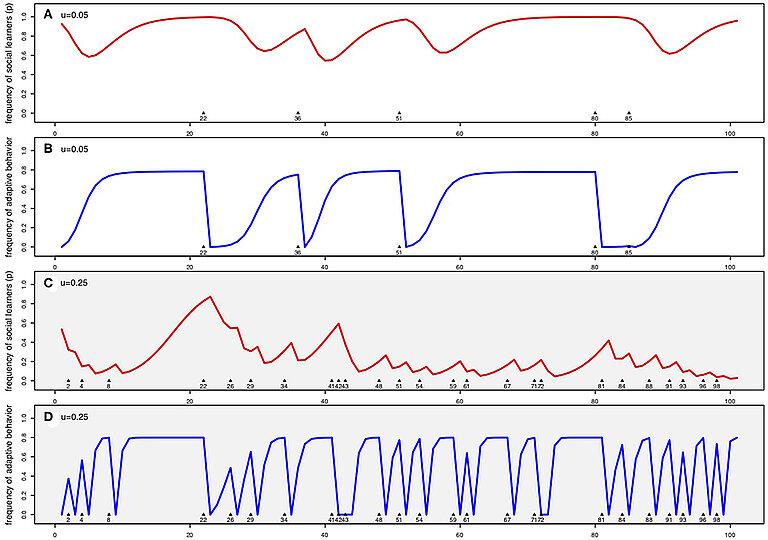
Human-induced rapid environmental change (HIREC) poses threats to a variety of species, and if or how it changes phenotypes is a question of central importance bridging evolutionary ecology and conservation management. Social learning is one type of phenotypic plasticity that can shape organismal responses to HIREC; it allows organisms to acquire phenotypes on a timescale that closely tracks environmental change while minimizing the costs of individual learning. A common assumption in behavioral ecology, is that social learning is generally an adaptive way to cope with HIREC by facilitating the rapid spread of innovative responses to change. While this can be true, social learning can also be maladaptive. It may hinder the spread of adaptive behavior by causing a carryover of old, no longer adaptive behaviors that slow the response to HIREC or even promote the spread of maladaptive behaviors. Here, we present a conceptual framework outlining how an organism's evolutionary history can shape cognitive mechanisms, social behavior, and population composition, which in turn affect how an organism responds to HIREC. Read full article here.
Hidden Markov Models Reveal Tactical Adjustment of Temporally Clustered Courtship Displays in Response to the Behaviors of a Robotic Female (12 June 2019)
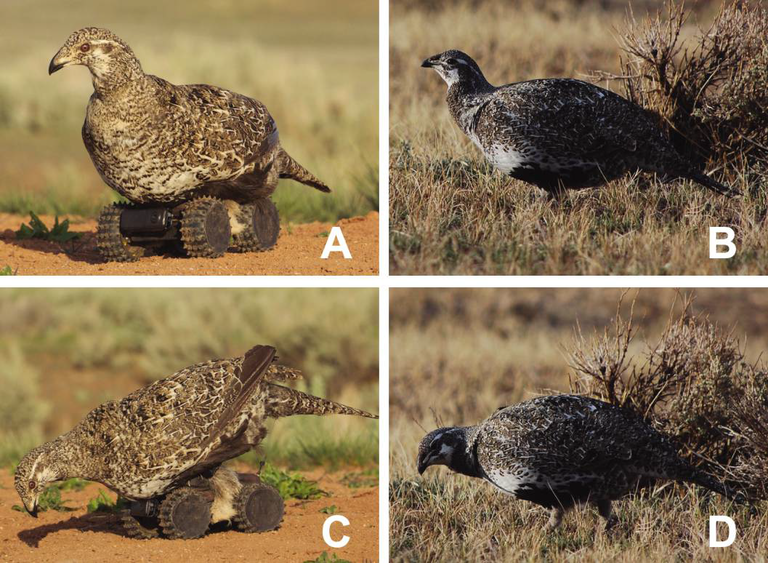
We present a statistical approach—a custom-built hidden Markov model (HMM)—that is broadly applicable to the analysis of temporally clustered display events, as found in many animals, including
birds, orthopterans, and anurans. This HMM can simultaneously estimate both the expected lengths of each animal’s display bouts and their within-bout display rates. We highlight the HMM’s ability to estimate changes in animals’ display effort over time and across different social contexts, using data from male greater sage grouse (Centrocercus urophasianus). Male display effort was modeled across three sites in two experimental treatments (robotic female simulating interested or uninterested behavior) and in the presence or absence of live females. Across contexts, we show that sage grouse males primarily adjust their bout lengths rather than their within-bout display rates. Males’ responses to female behavior were correlated with male mating success: males with more matings showed high display persistence regardless of female behavior, whilemales with fewer matings
tended to invest selectively in females that were already showing interest in mating. Additionally, males with higher mating success responded more to the presence of a female than males with fewer
matings did. We conclude with suggestions for adapting our HMM approach for use in other animal systems. Read the full article.
Rapid environmental change in games: complications and counter- intuitive outcomes (15 May 2019)
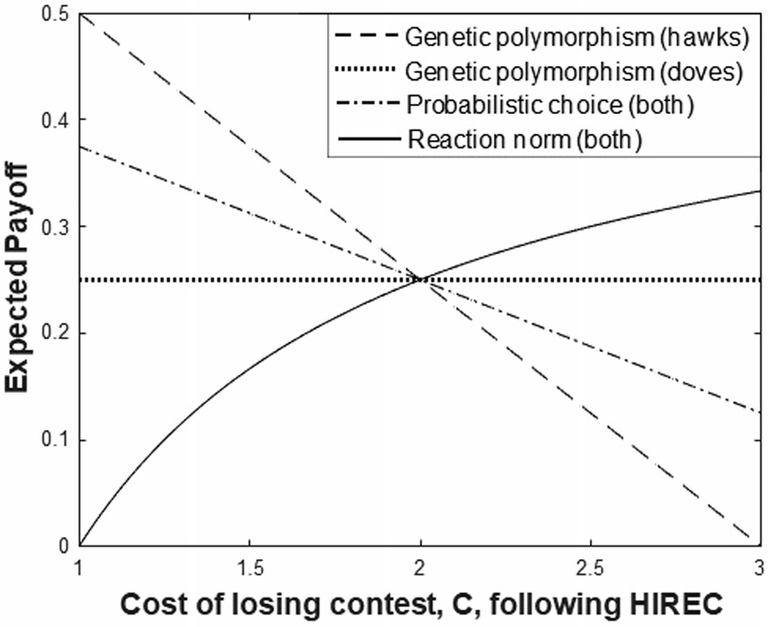
Human-induced rapid environmental change (HIREC) has recently led to alterations in the fitness and behavior of many organisms. Game theory is an important tool of behavioral ecology for analyzing evolutionary situations involving multiple individuals. However, game theory bypasses the details by which behavioral phenotypes are determined, taking the functional perspective straight from expected payoffs to predicted frequencies of behaviors. In contrast with optimization approaches, we identify that to use existing game theoretic models to predict HIREC effects, additional mechanistic details (or assumptions) will often be required. We illustrate this in relation to the hawk-dove game by showing that three different mechanisms, each of which support the same ESS prior to HIREC (fixed polymorphism, probabilistic choice, or cue dependency), can have a substantial effect on behavior (and success) following HIREC. Read the full article.
Machine behaviour (02 May 2019)
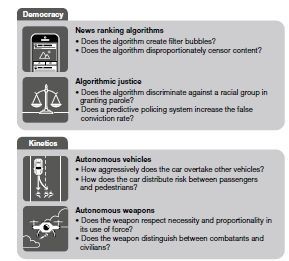
Machines powered by artificial intelligence increasingly mediate our social, cultural, economic and political interactions. Understanding the behaviour of artificial intelligence systems is essential to our ability to control their actions, reap their benefits and minimize their harms. Here we argue that this necessitates a broad scientific research agenda to study machine behaviour that incorporates and expands upon the discipline of computer science and includes insights from across the sciences. We first outline a set of questions that are fundamental to this emerging field and then explore the technical, legal and institutional constraints on the study of machine behaviour. Read the full article.
Moralizing gods, impartiality and religious parochialism across 15 societies (06 March 2019)
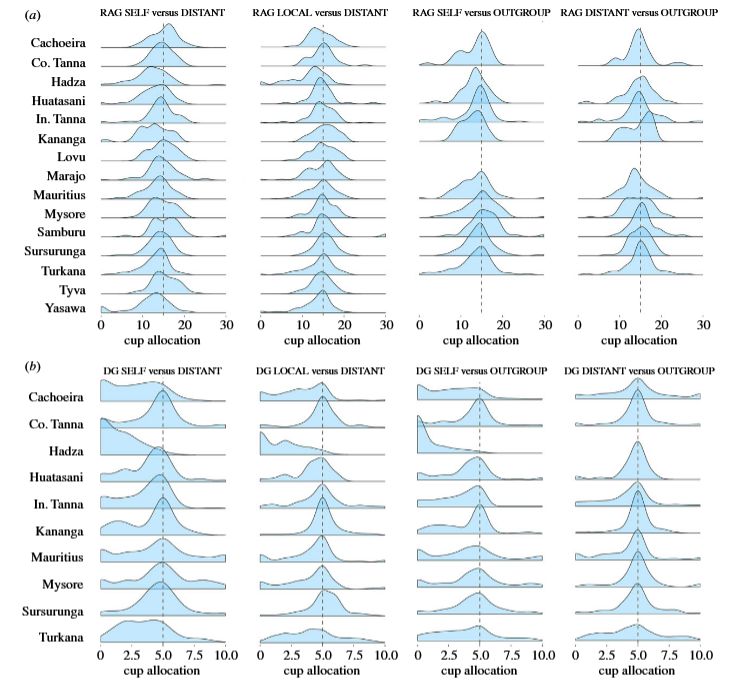
The emergence of large-scale cooperation during the Holocene remains a central problem in the evolutionary literature. One hypothesis points to culturally evolved beliefs in punishing, interventionist gods that facilitate the extension of cooperative behaviour toward geographically distant coreligionists. Furthermore, another hypothesis points to such mechanisms being constrained to the religious ingroup, possibly at the expense of religious outgroups. To test these hypotheses, we administered two behavioural experiments and a set of interviews to a sample of 2228 participants from 15 diverse populations. These populations included foragers, pastoralists, horticulturalists, and wage labourers, practicing Buddhism, Christianity, and Hinduism, but also forms of animism and ancestor worship. Read the full article.
Identity fusion, outgroup relations, and sacrifice: A cross-cultural test (01 February 2019)
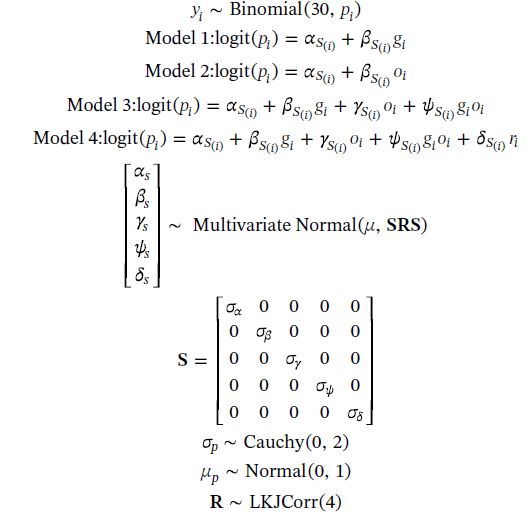
Identity fusion theory has become a popular psychological explanation of costly self-sacrifice. It posits that while maintaining one’s own individual identity, a deep affinity with one’s group can contribute to sacrifice for that group. We test this and related hypotheses using a behavioral economic experiment designed to detect biased, self-interested favoritism among eight different populations ranging from foragers and horticulturalists to the fully market-integrated. We find that while individuals favor themselves on average, those with higher ingroup fusion sacrifice more money to other members of their ingroup who are unable to reciprocate. We also find that positive outgroup relations has a similar effect. Additionally, we assess a recently-posited interaction between ingroup and outgroup relations and show no consistent effect at the individual or sub-sample levels. Read the full article.
War increases religiosity (29 January 2019)
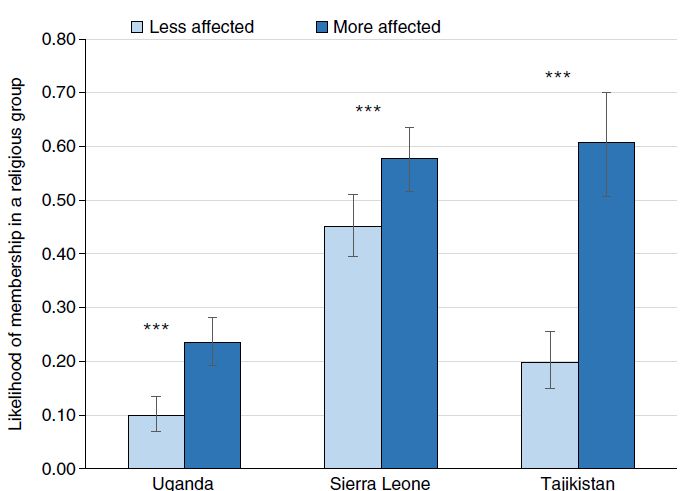
Does the experience of war increase people’s religiosity? Much evidence supports the idea that particular religious beliefs and ritual forms can galvanize social solidarity and motivate in-group cooperation, thus facilitating a wide range of cooperative behaviours including—but not limited to—peaceful resistance and collective aggression. However, little work has focused on whether violent conflict, in turn, might fuel greater religious participation. Here, we analyse survey data from 1,709 individuals in three post-conflict societies—Uganda, Sierra Leone and Tajikistan. The nature of these conflicts allows us to infer, and statistically verify, that individuals were quasirandomly afflicted with different intensities of war experience—thus potentially providing a natural experiment. We then show that those with greater exposure to these wars were more likely to participate in Christian or Muslim religious groups and rituals, even several years after the conflict. Read the full article.
Higher fundamental frequency in bonobos is explained by larynx morphology (24 October 2018)
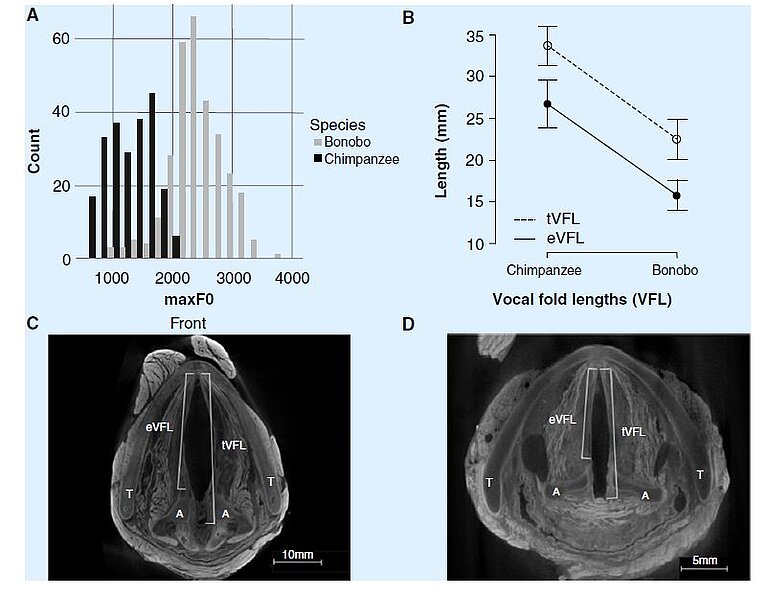
Acoustic signals, shaped by natural and sexual selection, reveal ecological and social selection pressures. Examining acoustic signals together with morphology can be particularly revealing. But this approach has rarely been applied to primates, where clues to the evolutionary trajectory of human communication may be found. Across vertebrate species, there is a close relationship between body size and acoustic parameters, such as formant dispersion and fundamental frequency (f0). Deviations from this acoustic allometry usually produce calls with a lower f0 than expected for a given body size, often due to morphological adaptations in the larynx or vocal tract. An unusual example of an obvious mismatch between fundamental frequency and body size is found in the two closest living relatives of humans, bonobos (Pan paniscus) and chimpanzees (Pan troglodytes). Read the full article.
The evolution of bequeathal in stable habitats (16 October 2018)
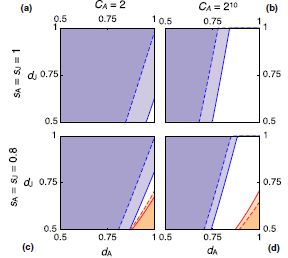
Adults sometimes disperse, while philopatric offspring inherit the natal site, a pattern known as bequeathal. Despite a decades‐old empirical literature, little theoretical work has explored when natural selection may favor bequeathal. We present a simple mathematical model of the evolution of bequeathal in a stable environment, under both global and local dispersal. We find that natural selection favors bequeathal when adults are competitively advantaged over juveniles, baseline mortality is high, the environment is unsaturated, and when juveniles experience high dispersal mortality. However, frequently bequeathal may not evolve, because the fitness cost for the adult is too large relative to inclusive fitness benefits. Read the full article.
Habitual stone-tool-aided extractive foraging in white-faced capuchins, Cebus capucinus (04 September 2018)
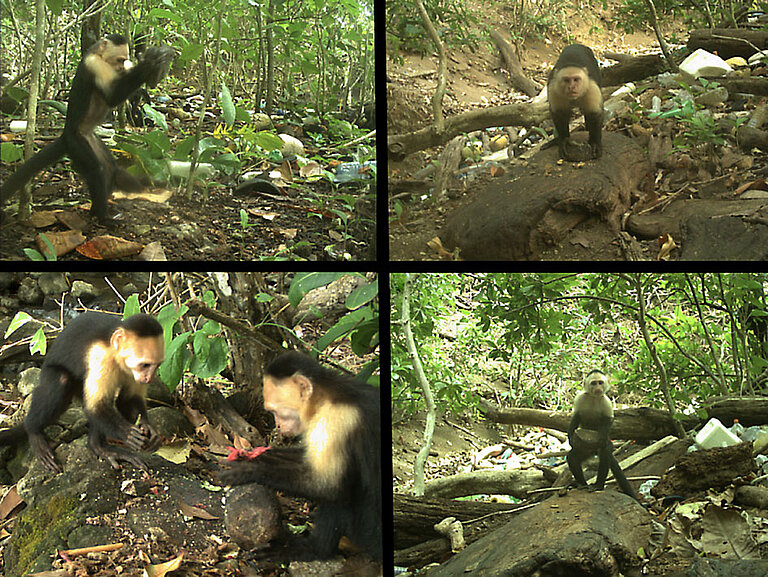
Habitual reliance on tool use is a marked behavioural difference between wild robust (genus Sapajus) and gracile (genus Cebus) capuchin monkeys. Despite being well studied and having a rich repertoire of social and extractive foraging traditions, Cebus sp. rarely use tools and have never been observed using stone tools. By contrast, habitual tool use by Sapajus is widespread. We review theory and discuss factors which might explain these differences in patterns of tool use between Cebus and Sapajus. We then report the first case of habitual stone tool use in a gracile capuchin: a population of whitefaced capuchins (Cebus capucinus imitator) in Coiba National Park, Panama who habitually rely on hammerstone and anvil tool use to access structurally protected food items in coastal areas including Terminalia catappa seeds, hermit crabs, marine snails, terrestrial crabs and other items. Read the full article.
Greater wealth inequality, less polygyny: rethinking the polygyny threshold model (18 July 2018)
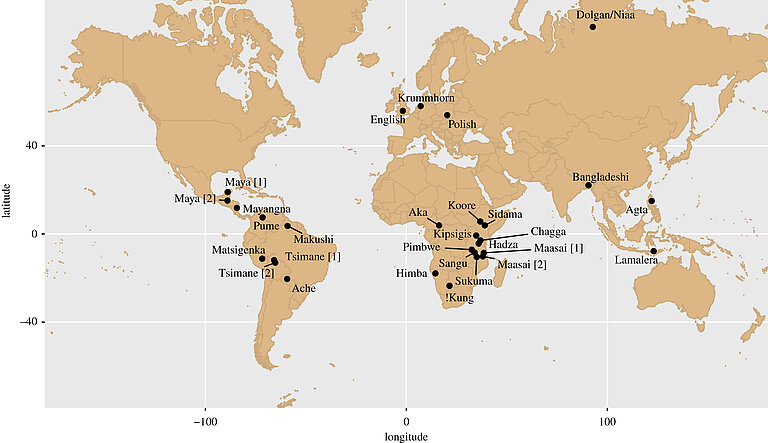
Monogamy appears to have become the predominant human mating system with the emergence of highly unequal agricultural populations that replaced relatively egalitarian horticultural populations, challenging the conventional idea—based on the polygyny threshold model—that polygyny should be positively associated with wealth inequality. To address this polygyny paradox, we generalize the standard polygyny threshold model to a mutual mate choice model predicting the fraction of women married polygynously. We then demonstrate two conditions that are jointly sufficient to make monogamy the predominant marriage form, even in highly unequal societies. We assess if these conditions are satisfied using individual-level data from 29 human populations. Read the full article.
Complex Dynamics From Simple Cognition: The Primary Ratchet Effect in Animal Culture (16 July 2018)
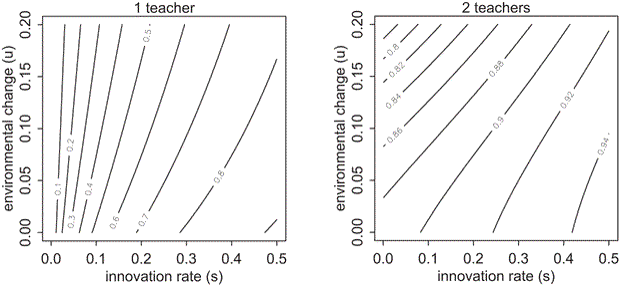
It is often observed that human culture, unlike most other animal culture, is cumulative: Human technology and behavior is more complex than any individual could invent in their own lifetime. Cumulative culture is often explained by appeal to a combination of highfidelity social learning and innovation, the “ratchet effect.” What is often overlooked is that both human and other animal cultures are supported by a more primary ratchet effect that retains and increases the prevalence of adaptive behavior. This primary ratchet can arise without appeal to specialized cognitive adaptations and is plausibly more widespread in animal societies. We use a simple model to highlight how simple forms of contingent social learning can create the primary ratchet effect, dramatically increasing the prevalence of adaptive, hard-to-invent behavior. Read the full article.
Resolution of apparent paradoxes in the race-specific frequency of use-of-force by police (06 June 2018)
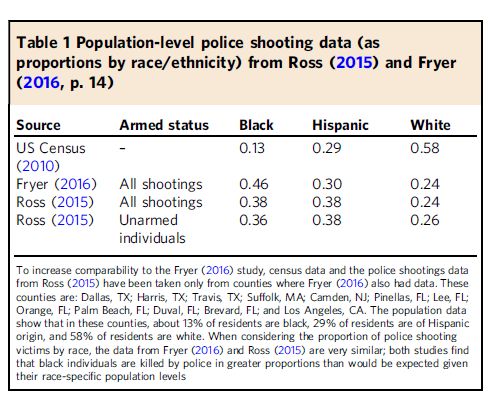
Analyses of racial disparities in police use-of-force against unarmed individuals are central to public policy interventions; however, recent studies have come to apparently paradoxical findings concerning the existence and form of such disparities. Although anti-black racial disparities in U.S. police shootings have been consistently documented at the population level, new work has suggested that racial disparities in encounter-conditional use of lethal force by police are reversed relative to expectations, with police being more likely to: (1) shoot white relative to black individuals, and (2) use non-lethal as opposed to lethal force on black relative to white individuals. Encounter- and use-of-force-conditional results, however, can be misleading if the rates with which police encounter and use non-lethal force vary across officers and depend on suspect race. We find that all currently described empirical patterns in the structuring of police use-of-force—including the “reversed” racial disparities in encounter-conditional use of lethal force—are explainable under a generative model in which there are consistent and systemic biases against black individuals. Read the full article.
Social complexity and kinship in animal societies (25 May 2018)
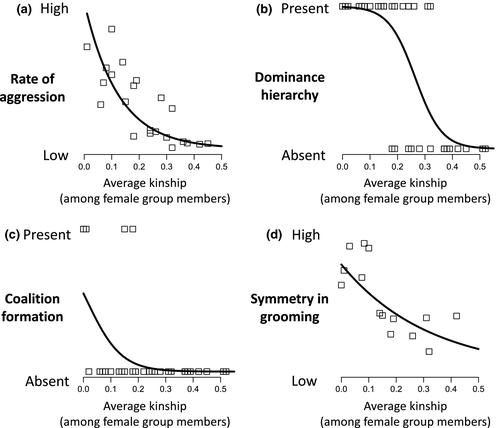
Studies of eusocial invertebrates regard complex societies as those where there is a clear division of labour and extensive cooperation between breeders and helpers. In contrast, studies of social mammals identify complex societies as those where differentiated social relationships influence access to resources and reproductive opportunities. We show here that, while traits associated with social complexity of the first kind occur in social mammals that live in groups composed of close relatives, traits associated with the complexity of social relationships occur where average kinship between female group members is low. Read the full article.
Sizing up human brain evolution (24 May 2018)
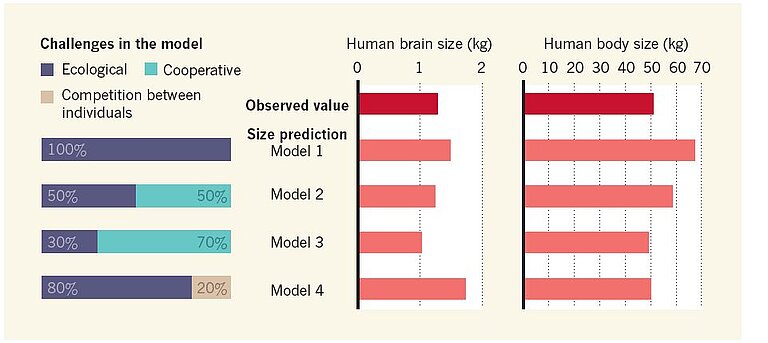
Sizing up human brain evolution
An innovative computational analysis of factors that might have influenced human brain evolution suggests that ecological, rather than social, factors had a key role in the evolution of large, rapidly developing brains. Read the full article.
The Evolution of Covert Signaling (03 April 2018)
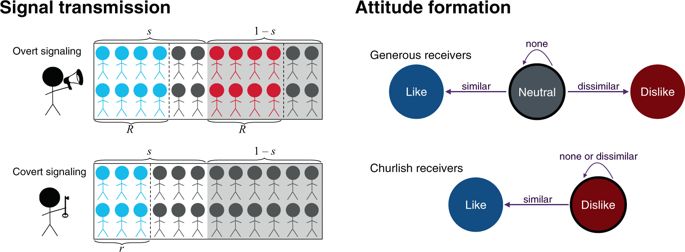
Human sociality depends upon the benefits of mutual aid and extensive communication. However, diverse norms and preferences complicate mutual aid, and ambiguity in meaning hinders communication. Here we demonstrate that these two problems can work together to enhance cooperation through the strategic use of deliberately ambiguous signals: covert signaling. Covert signaling is the transmission of information that is accurately received by its intended audience but obscured when perceived by others. Such signals may allow coordination and enhanced cooperation while also avoiding the alienation or hostile reactions of individuals with different preferences. Read the full article.
Material security, life history, and moralistic religions: A cross-cultural examination (08 March 2018)

Researchers have recently proposed that “moralistic” religions—those with moral doctrines, moralistic supernatural punishment, and lower emphasis on ritual—emerged as an effect of greater wealth and material security. One interpretation appeals to life history theory, predicting that individuals with “slow life history” strategies will be more attracted to moralistic traditions as a means to judge those with “fast life history” strategies. As we had reservations about the validity of this application of life history theory, we tested these predictions with a data set consisting of 592 individuals from eight diverse societies. Read the full article.
Generative inference for cultural evolution (12 February 2018)
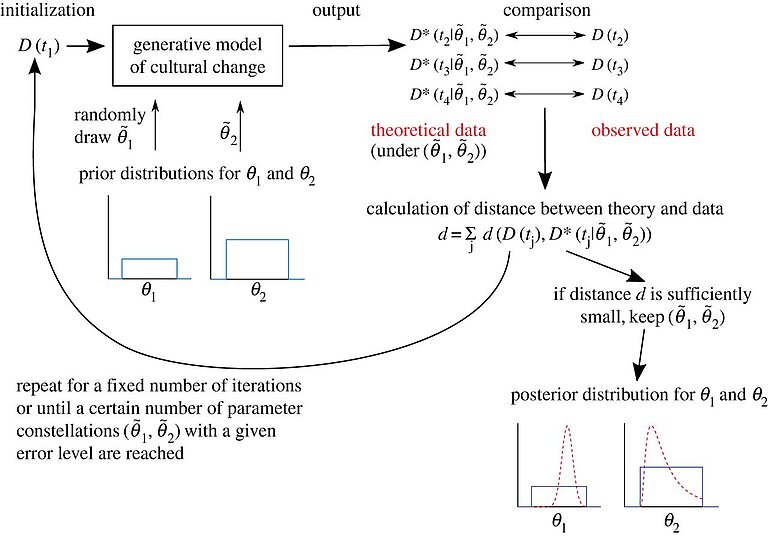
Dr Anne Kandler and her co-author Dr Adam Powell have published a review paper on methods for inferring cultural evolutionary mechanisms from data. One of the major challenges in cultural evolution is to understand why and how various forms of social learning are used in human populations, both now and in the past. The authors demonstrate the applicability and utility of generative inference approaches to the field of cultural evolution. The framework advocated uses observed population-level frequency data directly to establish the likely presence or absence of particular hypothesized learning strategies. Read the full article.
Evolutionary dynamics of the cryptocurrency market (11 January 2018)
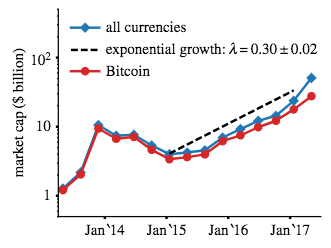
New work from Dr Anne Kandler and colleagues sheds light on the cultural evolutionary dynamics of cryptocurrencies. Kandler and colleagues consider the history of 1469 cryptocurrencies introduced between April 2013 and May 2017. They reveal that, while new cryptocurrencies appear and disappear continuously and their market capitalization is increasing (super-)exponentially, several statistical properties of the market have been stable for years. These include the number of active cryptocurrencies, market share distribution and the turnover of cryptocurrencies. Adopting an ecological perspective, they show that the so-called neutral model of evolution is able to reproduce a number of key empirical observations. Read the full article.
Inferring processes of cultural transmission: the critical role of rare variants in distinguishing neutrality from novelty biases (11 January 2018)
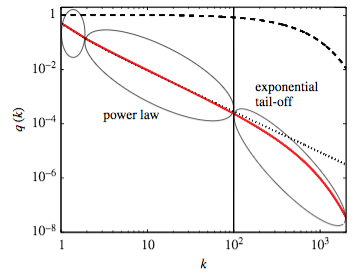
Neutral evolution assumes that there are no selective forces distinguishing different variants in a population. Many studies have sought to assess whether neutrality can provide a good description of different episodes of cultural change. One approach has been to test whether neutral predictions are consistent with observed progeny distributions, recording the number of variants that have produced a given number of new instances within a specified time interval: a classic example is the distribution of baby names. New work from HBEC scientist Dr Anne Kandler and colleague Dr James O'Dwyer shows that these distributions consist of two phases: a power-law phase followed by an exponential cut-off for variants with very large numbers of progeny. They show that analyses based on only the most popular variants, as is often the case in studies of cultural evolution, can provide misleading evidence. While neutrality provides a plausible description of progeny distributions of abundant variants, rare variants deviate from neutrality. Read the full article.
Friendliness is more important in a new friend than which group she belongs to (19 October 2017)
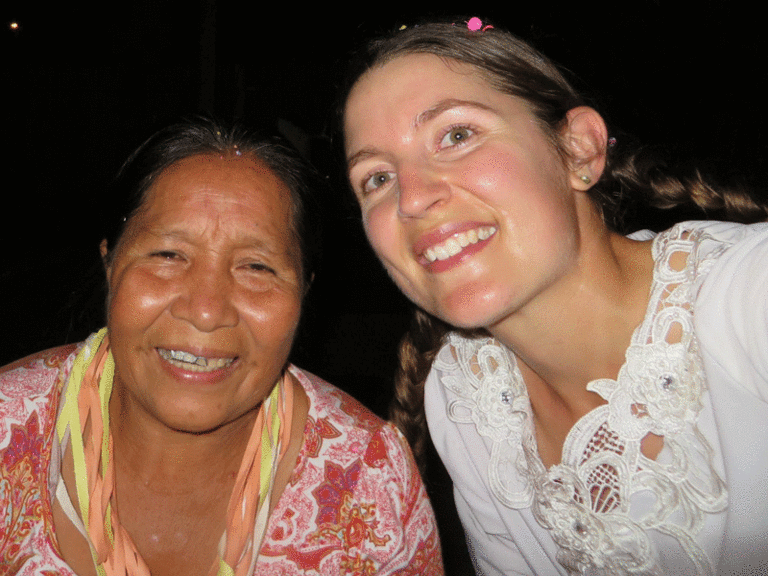
Despite the global headlines emphasizing division and conflict, humans actually have a long history of forming friendships across group boundaries. But which criteria do they use for picking friends from a different group? In collaboration with three populations of horticulturalists in Bolivia, researchers of the Max Planck Institute for Evolutionary Anthropology and the University of California Santa Barbara found that we use very similar criteria when choosing friends from among in-group and out-group strangers – individual cooperative qualities are most important in both cases. Only when it comes to dividing limited resources, qualities associated with a group can affect partner preference. Full press release. Access the paper.
Inferring individual-level processes from population-level patterns in cultural evolution (06 September 2017)
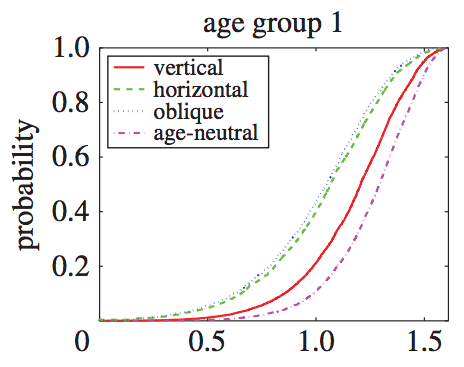
Dr Anne Kandler has published a new analysis of the potential for inferring learning mechanisms from population-level data. Patterns of cultural change depend upon individual-level strategies. Inferring these strategies from data is complicated by the paucity of individual-level data. Researchers commonly attempt to infer strategies instead of available population-level data. Kandler and her co-authors show that such data are useful in limited, but valuable, ways. These results represent a substantial advance and refine thinking about both the limits and potential of using aggregate data to infer individual processes.
Multinomial analysis of behavior: statistical methods (26 August 2017)
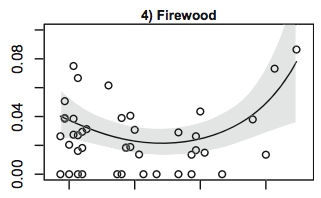
Jeremy Koster and Richard McElreath have published a new statistical framework for analyzing behavioral data, applying the technique to human data from Koster's field site. The method accepts the multinomial nature of behavior data and also accounts for repeated observations. It is also capable of revealing individual-level trade-offs across behaviors, allowing for models that reveal the extent to which individuals who regularly engage in one behavior also exhibit relatively more or less of another behavior. These models can potentially be applied to a broad class of statistical analyses by behavioral ecologists, focusing on other polytomous response variables, such as behavior, habitat choice, or emotional states.
Interethnic Interaction, Strategic Bargaining Power, and the Dynamics of Cultural Norms (21 August 2017)
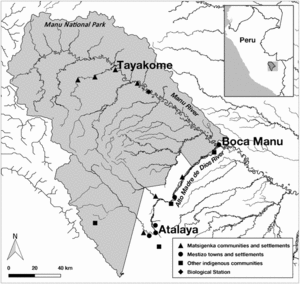
New publication by Dr John Bunce, Interethnic Interaction, Strategic Bargaining Power, and the Dynamics of Cultural Norms.
Dr Bunce addresses processes of ethnic boundary maintenance and change, using ethnographic data from his fieldwork in lowland Amazonia, in combination with Bayesian models of normative behavior. Code and data.
Conformity does not perpetuate suboptimal traditions in a wild population of songbirds (24 July 2017)
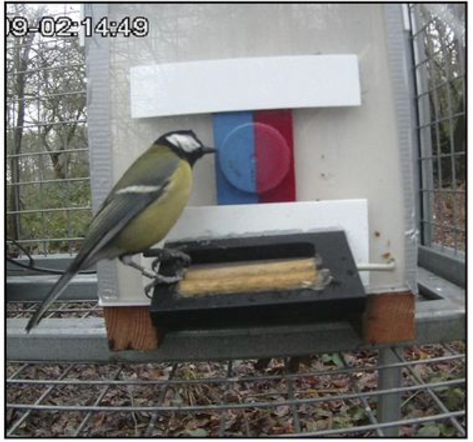
New analysis published on a collaboration between HBEC and the Edward Grey Institute at Oxford: Conformity does not perpetuate suboptimal traditions in a wild population of songbirds. Conformist learning can be adaptive, but it may be maladaptive when environments change. Using a field experiment, the researchers document the social learning strategies that allow a wild population to adapt to environmental change. A mix of conformity and innovation is found in the analysis and demonstrated in theory to be broadly adaptive. Code and data.
Pay-off-biased social learning underlies the diffusion of novel extractive foraging traditions in a wild primate (07 June 2017)
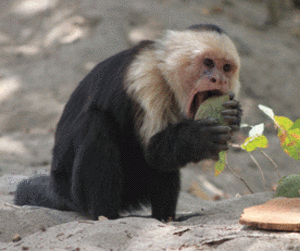
New analysis of social learning in a wild primate, by Brendan Barrett, Richard McElreath, and Susan Perry. Using field experiments, they document the spread of behavioral traditions and analyze the learning strategies that may account for the spread. The analysis suggests that payoff-biased social learning strongly influences behavior. Data and code.
Seminar: A Life History of Human Foraging in 39 Societies (31 May 2017)
Seminar (YouTube), presented by Richard McElreath at Aarhus University. This seminar presents progress on a large meta-analysis of foraging records from 39 human samples.